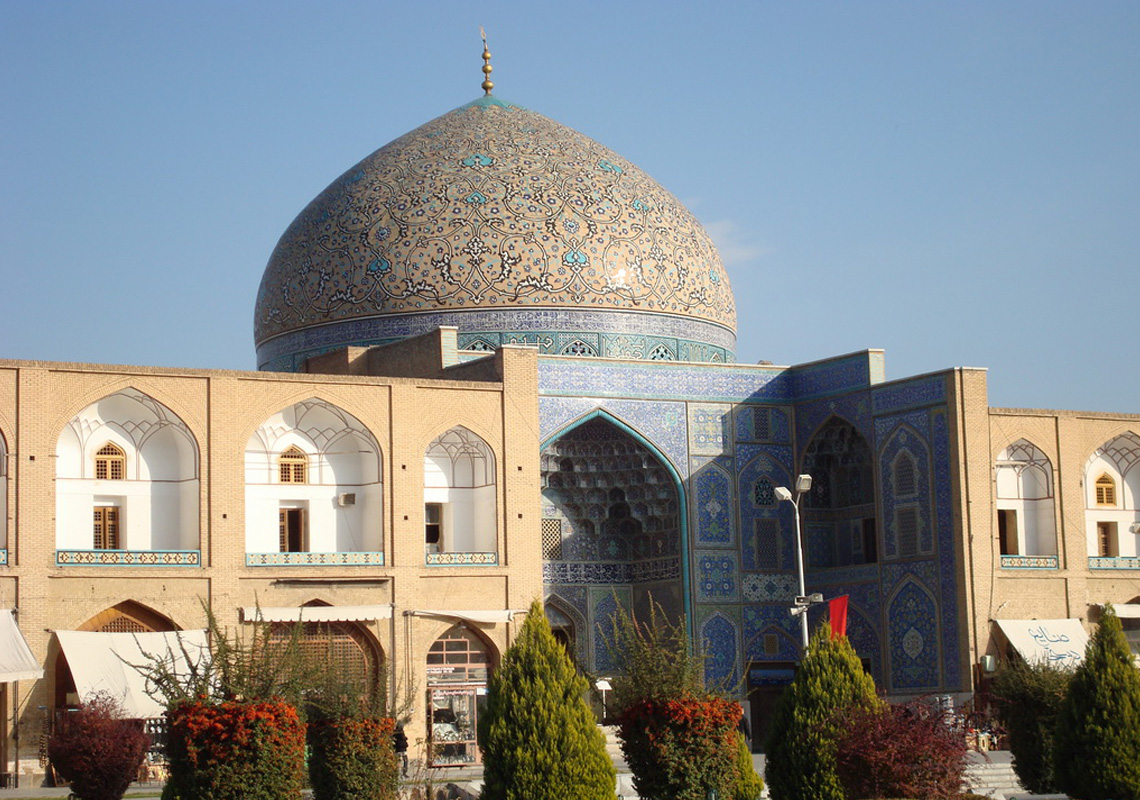The Sheikh Lotfollah Mosque is one of the masterpieces of the Safavi era. By the order of King Abbas I, the construction began in 1603 and finished in 1619. The Sheikh Lotfollah Mosque is located in the beautiful city of Isfahan.
It was built by the skillful architect Mohammad Reza Isfahani.
History of Sheikh Lotfollah Mosque
The design of the mosque was laid out simultaneously with the implementation of the plan of the Chahar-baq and Hezarjerib. It was put into operation during the flourishing time of Safavi architecture during the eleven years. The mosque was built on the order of King Abbas in honor of Sheikh Lotfollah Jebel Ali. He was a Shiite cleric at the time and, like Sheikh Baha'i, had emigrated from Lebanon to Iran by the order of Shah Abbas. Because the Safavid government was a religious center oriented and paid a high price to develop Islam, and especially to the Shiite religion. On the other hand, Sheikh Lotfollah was also the father of Shah Abbas's wife. For these reasons, the mosque was built on the site of Sheikh Lotfollah for his family praying and the Sheikh himself. Also next to it a school was built to teach his ideas. There is no traces left of this school today. In the Safavi era, this beautiful mosque was also known as Sadr and Fathullah Mosque.
Mosque architecture
The entrance of this mosque was constructed and finished in five years and its interior construction and decoration with tiles was completed in ten years. Sheikh Lotfollah Mosque has neither a minaret nor a courtyard entrance, however, the entrance to the staircase is a bit unnatural.
The inscription of the mosque is on ‘Solceline’ of Master Alireza Abbasi and also the lines and scrolls inside the mosque is work of this master and also Baqir who was an anonymous artist of that time whose sample handwriting almost equals Alireza Abbasi's handwriting.
At the entrance of the mosque is a double-sided door that is made of a single-toned plane tree which still stands after 400 years. One of the features of this mosque is having rotation aligned to the north-south axis and towards the Qibleh, which is called architectural heel.
This heel is so elaborate and well-designed that you will not see any traces of it from the outside. To overcome this angle, a corridor has been designed that is completely covered with seven-color tiles in predominantly of green and blue colors. This corridor starts on the left at the beginning of the entrance and then ends to the right.
After crossing this corridor, you will reach the main courtyard and the low-height dome (32 meters from the ground). This dome has become one of the most beautiful domes in Isfahan and Iran, due to its grandeur, formations and decorations in dark blue on white background. It is also designed in the inner center of the Peacock Dome, whose feathers are complemented by light from the top arch at the entrance to the mosque. You will see a stunning display of light rotating beautifully in the interior below the viewing dome.
A very important characteristic that you can pay attention to in order to compare historical places in Iran or to compare boutique hotels in Iran is the tile-work. If a luxury traditional hotel doesn’t have a good tile-work you cannot call it an old house accommodation in Iran.
The Sheikh Lotfollah Mosque is built on a quadrilateral and turns into an octagon in the upper part, eventually joining the circular staircase. The walls are built to withstand a heavy weight so that the diameter of them near windows reaches 1.7 meters and in the main parts even they are more than 2 meters.
At the top at the entrance of the corridor there is an opening for the public lighting, especially the altar. But for the lighting the mosque, there are two windows at the stem of the dome, and because they have grid windows around the building, they will bring in some sunlight throughout the daytime into the nightstand.
Professor Mohammad Reza Bana Isfahani could have added more light to the building by opening more windows, but by inserting the same amount of light on the tiles, he caught our attention to each pice of tile.
One of the architectural masterpieces can be found by looking at the altar of the mosque, where a delicate tile-works shines as well as tablets inside the altar that have the inscription "The work of a low-level and poor man a needy of the mercy from God Mohammad Reza son of Master Hussein Bana Isfahani".
There are other inscriptions with the hands of Master Alireza Abbasi around the altar on which are written some of the Prophet Muhammad’s and Imam Jafar Sadegh’s words. In addition, there are poetic narratives that experts believe that they are poetry of Sheikh Baha'i and some scholars of the Safavi era. The view of world-renowned architect Luis Eun during his visit to Isfahan was as follows:
I can only imagine such a work in the realm of imagination and by using gold and silver in it.
Tourists who choose Kianpour boutique hotel to stay, can take a walk to this monument, because it is only 4.4 km away from our house accommodation in Iran. Vehicles are not allowed to pass near this area, however, you can rent a bike, call for a cab or choose other types of public transportation in order to get closer to Shah square which this monument rests.







